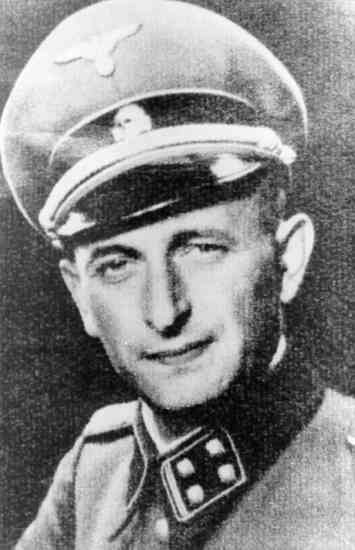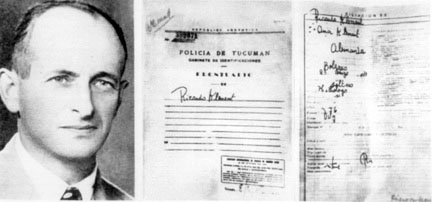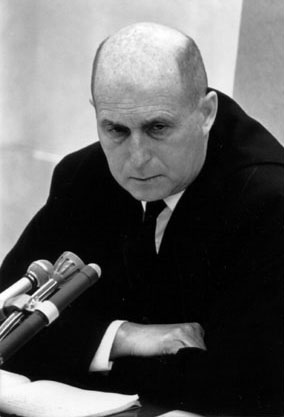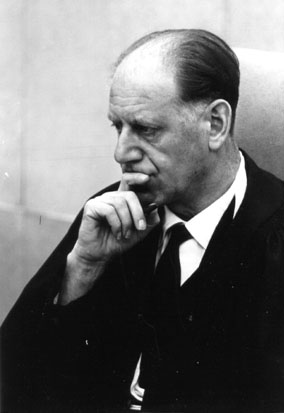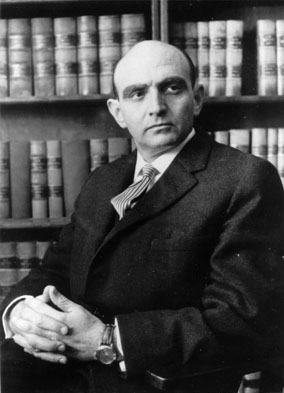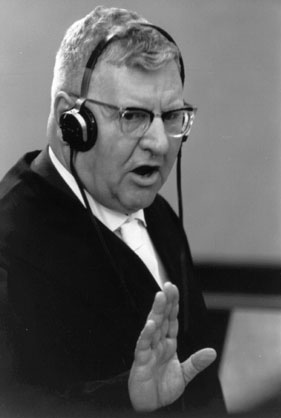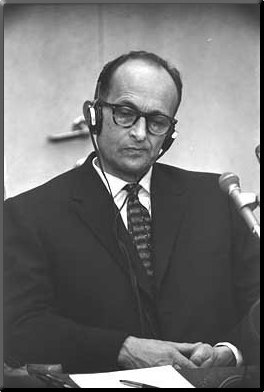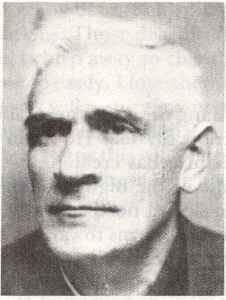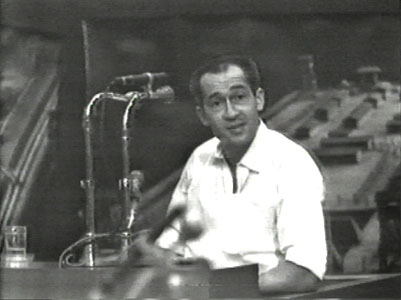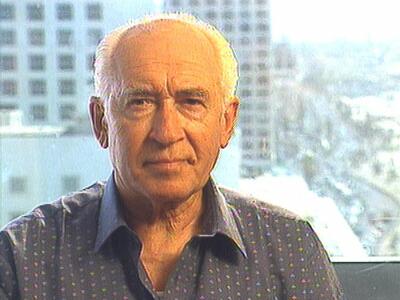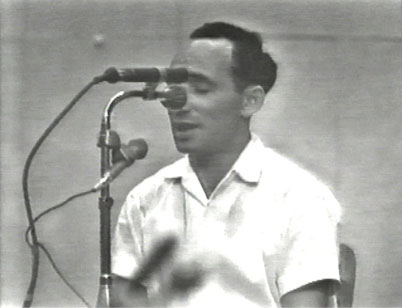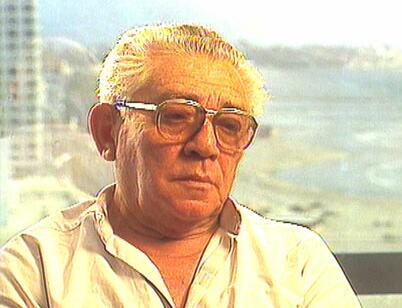THE EICHMANN TRIAL: PROCEEDINGS Session No. 66 06-Jun-1961 p. 1210
Testimony of Kalman Teigman of Treblinka
Q. We shall ask someone who as in Camp 2. Please tell us about the plan for resistance and the uprising.
A. We began talking, in fact, about the plan for resistance immediately after we reached the camp. For, in my opinion, any man who is imprisoned in a camp or any other place at once thinks of escaping. But, at the beginning, this was not possible, since we did not know one another, and people were simply afraid to talk to each other, because there were many informers. And, in addition to that, we � this group, this team � worked up there and slept in one of the huts, which I described previously, in the yard. Hence, at the beginning, it was very difficult.
Q. Were you permitted to establish contact with Treblinka Camp 2?
A. No. But, at a later stage, someone, who was also one of the camp commanders, came to us. His name was Oberleutnant Stangl. He was from Austria. He made a speech and promised us that there were new buildings for the team inside our camp, and there we would have running water, and we would also be given bunks and would be able to sleep, and whoever worked would be able to live and go on living.
Within this camp, which contained the new buildings, there was a group who were called Hofjuden (Court Jews). This was a group of experts. They had erected this camp. Afterwards, when the deportations began, they remained inside this camp. But they enjoyed longer rest periods, greater liberty � they were not guarded so strictly, and they had ample food. They had a special hut for living quarters. These men did not want to come into contact with us. They did not want to come near us at all.
But, after this speech by Stangl, a change came about. He made a promise to us, and it actually happened. They brought us down from this hut up there into other huts, together with the Hofjuden, and there we really received blankets and bunks. And there was running water. There was a toilet, even though it was in the yard � but after we had been locked into the buildings, it was impossible to go out.
Q. Let us return to the story of planning the revolt.
A. When we arrived at this building and met the Hofjuden, they worked in the courtyard, they worked in the German quarters, they had access to all places. We knew that only with their assistance would we be able to accomplish anything, to get to a particular place, to escape or to carry out an armed revolt.
Q. Was there a young man named Moniek?
A. Yes, there was a young man there by the name of Moniek.
Q. What was his job?
A. He was the Kapo of the Hofjuden. But while it is usually thought that a Kapo was always an evil person, caused trouble, and beat up people, Moniek was not like that.
Q. Was he one of the organizers of the revolt?
A. Yes, later on he was one of the organizers of the revolt. There were a few others � there was also an engineer there by the name of Galewski � he was the camp elder. There was also a young man named Rudek � I don't know his surname � but I know that he came from Plock, and he told me then that he had a mother in Palestine.
Q. What was the plan you drew up for the revolt and the escape?
A. At first, there were two plans. Two children of the Hofjuden were employed in polishing the shoes of the Germans, and they worked in a hut where there was an arms store. This store was built by the experts amongst the Hofjuden, the fitters and the construction workers. An extra key to the store had to be made. And, in fact, they made a key, and the children were to go into the store, to remove arms in sacks, and to place them on refuse carts � guns, bullets, hand grenades and revolvers. They were to place the smaller items in buckets, items which could be carried by hand. The arms were to be distributed in various places in the camp, such as in the motor workshop or in the heaps of potatoes, and similar places. Thereafter, we were to ask the SS men to come to all the workshops and these places, under various pretexts, and to kill them inside the workshops, and in this way to rid ourselves of most of the SS men. And this is how it turned out, in fact.
Q. And in this way you carried out your plan?
A. Not altogether; we wanted to, but it did not succeed entirely.
Q. Who was the commander of the revolt?
A. I said there were a number of people.
Q. Who were they?
A. There was the engineer Galewski.
Q. Did he survive?
A. He did not survive.
Q. What happened to him?
A. Apparently he was killed during the revolt.
Q. Who else?
A. And there was Rudek, whom I mentioned � he was a mechanic.
Q. Did he remain alive?
A. He also fell. There was a young man named Djielo, a Jew from Czechoslovakia. It was said that he was a Czech officer.
Q. What happened to him?
A. He was also killed.
Q. Was the entire command killed?
A. I believe so, for I never came across any one of them.
|
